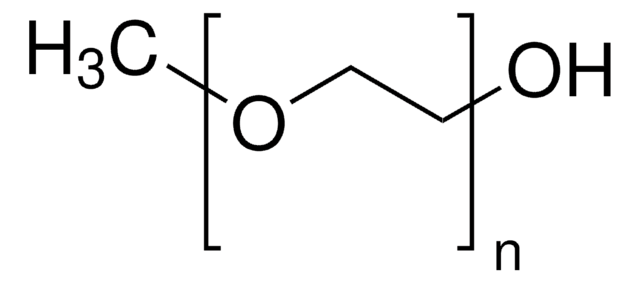85976
Methoxypolyethylene glycol succinate N-hydroxysuccinimide
5,000, ≥90%
Synonyme(s) :
Polyethylene glycol, mono-Methyl polyethylene glycol succinate N-succinimidyl ester, O-Methyl-O′-succinylpolyethylene glycol 5,000 N-succinimidyl ester, PEG-succinimidyl succinate
About This Item
Produits recommandés
Pureté
≥90%
Forme
powder
Température de stockage
−20°C
InChI
1S/C11H15NO7/c13-5-6-18-7-8(14)1-4-11(17)19-12-9(15)2-3-10(12)16/h13H,1-7H2
Clé InChI
OVPTZXRXNNJKSJ-UHFFFAOYSA-N
Vous recherchez des produits similaires ? Visite Guide de comparaison des produits
Application
- Matrix metalloproteinases-2/9-sensitive peptide-conjugated polymer micelles for site-specific release of drugs and enhancing tumor accumulation: preparation and in vitro and in vivo evaluation. This study explores the use of Methoxypolyethylene glycol succinate N-hydroxysuccinimide (MPEG-S-NHS) for creating peptide-conjugated polymer micelles that are sensitive to matrix metalloproteinases-2/9. These micelles are designed for site-specific drug release and increased tumor targeting, showcasing a promising application in advanced drug delivery systems (Zhang X, Wang X, Zhong W, Ren X, Sha X, Fang X, 2016) [link].
Liaison
Code de la classe de stockage
11 - Combustible Solids
Classe de danger pour l'eau (WGK)
WGK 3
Point d'éclair (°F)
Not applicable
Point d'éclair (°C)
Not applicable
Équipement de protection individuelle
Eyeshields, Gloves, type N95 (US)
Certificats d'analyse (COA)
Recherchez un Certificats d'analyse (COA) en saisissant le numéro de lot du produit. Les numéros de lot figurent sur l'étiquette du produit après les mots "Lot" ou "Batch".
Déjà en possession de ce produit ?
Retrouvez la documentation relative aux produits que vous avez récemment achetés dans la Bibliothèque de documents.
Les clients ont également consulté
Notre équipe de scientifiques dispose d'une expérience dans tous les secteurs de la recherche, notamment en sciences de la vie, science des matériaux, synthèse chimique, chromatographie, analyse et dans de nombreux autres domaines..
Contacter notre Service technique

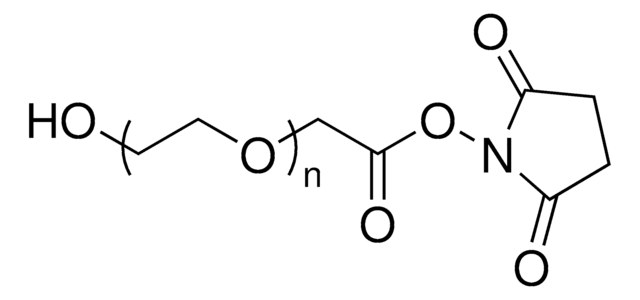
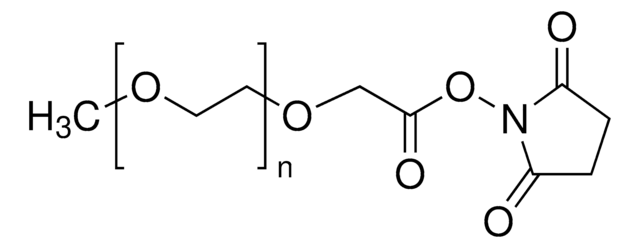
![O-[(N-Succinimidyl)succinyl-aminoethyl]-O′-methylpolyethylene glycol 2′000](/deepweb/assets/sigmaaldrich/product/structures/426/156/518cf3f3-8b50-4c91-8501-929224a040d2/640/518cf3f3-8b50-4c91-8501-929224a040d2.png)
![O-[(N-Succinimidyl)succinyl-aminoethyl]-O′-methylpolyethylene glycol average Mn 750](/deepweb/assets/sigmaaldrich/product/structures/244/886/c80fd8d8-9a62-4a97-be17-32d83ffd1dfb/640/c80fd8d8-9a62-4a97-be17-32d83ffd1dfb.png)
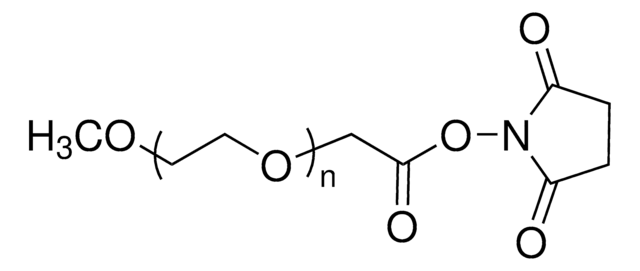
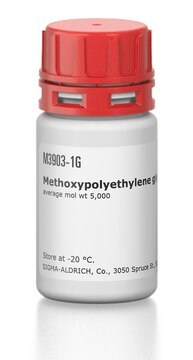

![O-[N-(3-Maleimidopropionyl)aminoethyl]-O′-[3-(N-succinimidyloxy)-3-oxopropyl]heptacosaethylene glycol ≥90% (oligomer purity)](/deepweb/assets/sigmaaldrich/product/structures/367/864/1c31a65f-501f-4464-8bb3-edff0d131a12/640/1c31a65f-501f-4464-8bb3-edff0d131a12.png)
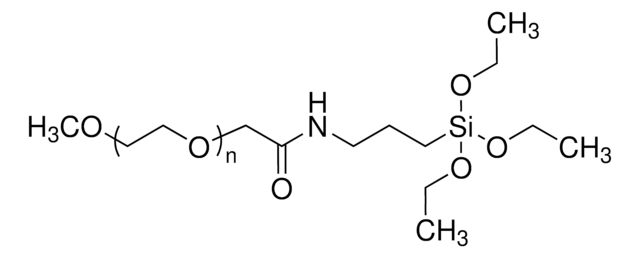
![(1R,8S,9s)-Bicyclo[6.1.0]non-4-yn-9-ylmethyl N-succinimidyl carbonate for Copper-free Click Chemistry](/deepweb/assets/sigmaaldrich/product/structures/969/022/d6776082-2f7a-47c7-bcd4-3830dac0fb7d/640/d6776082-2f7a-47c7-bcd4-3830dac0fb7d.png)
